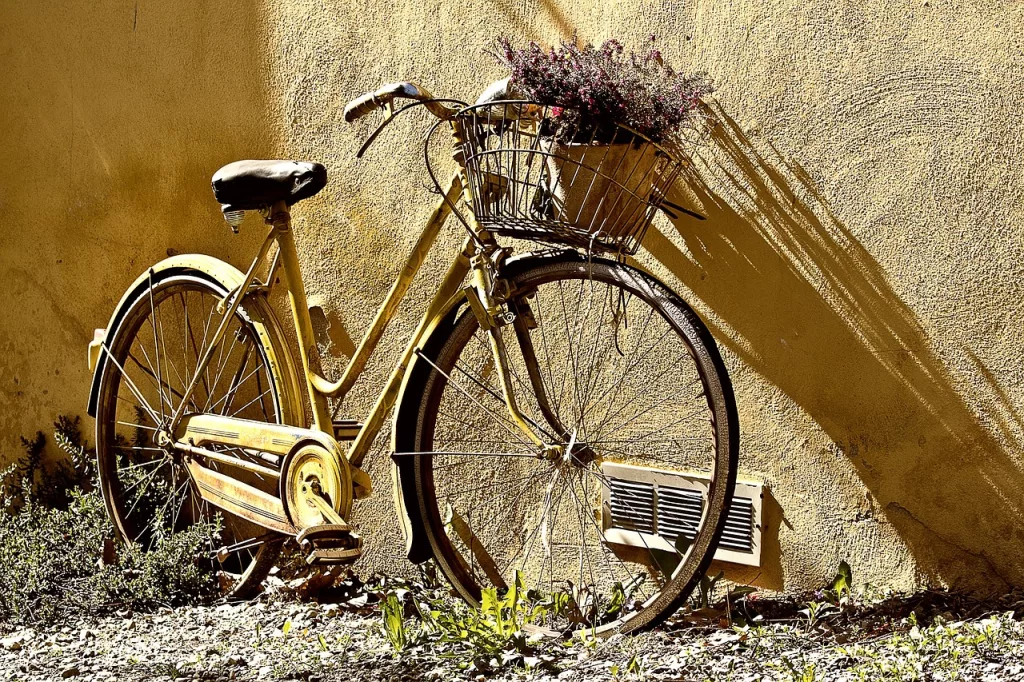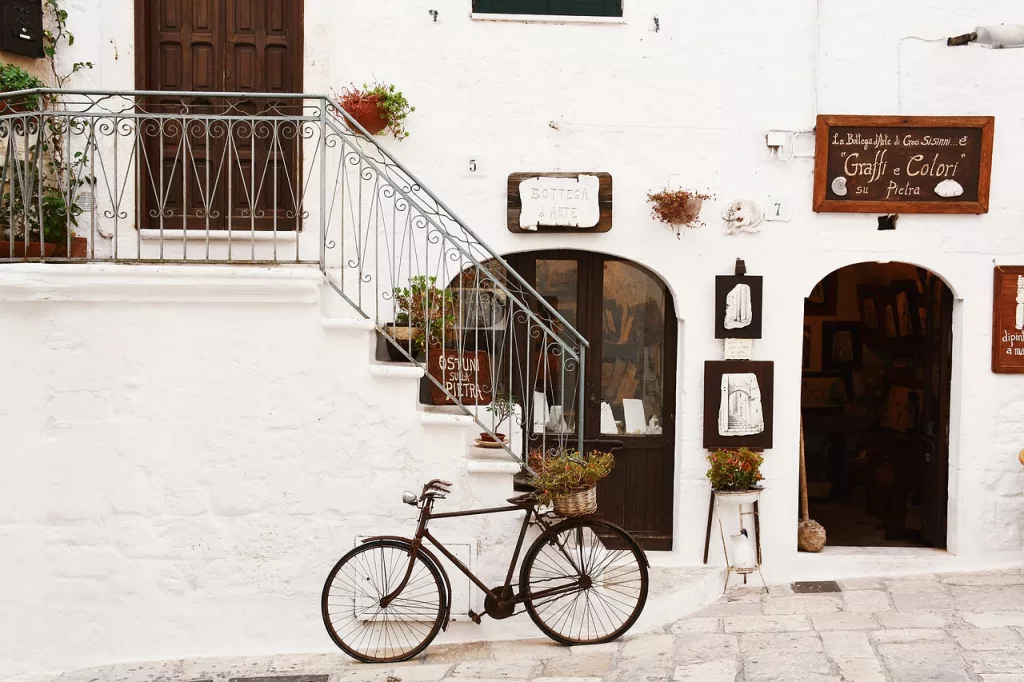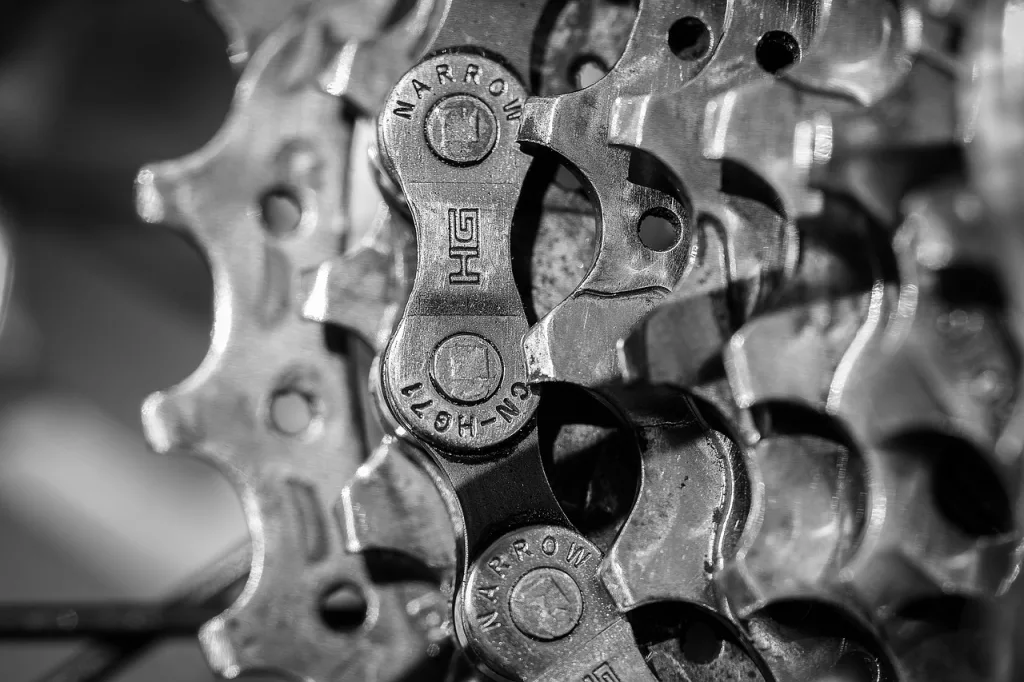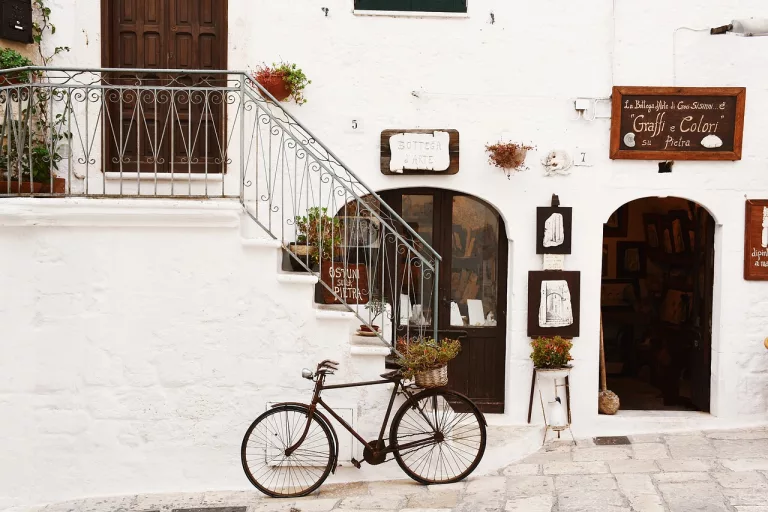Your Ultimate Guide To Choosing The Right Bike For Your Cycling Adventures
Is the open road calling your name? Are you ready to embark on thrilling cycling adventures? Before you set off on your two-wheeled journey, it’s crucial to choose the right bike that suits your needs. Whether you’re a seasoned cyclist or just starting out, our ultimate guide is here to help. From road bikes to mountain bikes, we’ll explore the various types and features available, ensuring that you find the perfect companion for your cycling escapades. So, strap on your helmet and get ready to pedal towards your next great adventure!

Consider Your Riding Style
Road Bikes
If you enjoy riding on smooth pavement and want to go fast, a road bike is the perfect choice for you. Road bikes are lightweight, designed for speed, and have narrow tires that reduce rolling resistance. They typically have drop handlebars that allow for an aerodynamic riding position. So whether you’re a beginner or an experienced cyclist, a road bike is a great option for those who love the thrill of speed on paved roads.
Mountain Bikes
If you’re more inclined towards off-road adventures and tackling rugged terrains, a mountain bike is what you need. Mountain bikes have wider, knobbier tires that provide excellent traction on dirt, gravel, and rocky trails. They also come with suspension systems to absorb the impact of rough terrain. With their sturdy frames and wide gear ranges, mountain bikes are built to handle the challenges of trail riding and give you an adrenaline-filled experience.
Hybrid Bikes
If you want a bike that can handle both smooth pavement and some light off-road trails, a hybrid bike might be the ideal choice for you. Hybrid bikes combine the best features of road and mountain bikes, making them versatile and suitable for a variety of riding conditions. They have slightly wider tires than road bikes for better stability on uneven surfaces and often come with a more upright riding position for increased comfort.
Touring Bikes
For those who have a love for long-distance cycling and dream of exploring new places on two wheels, a touring bike is a fantastic option. Touring bikes are specifically designed for carrying heavy loads and enduring long-distance rides. They have a durable frame, relaxed geometry for comfortable riding, and plenty of mounting points for racks and panniers. With their stable handling and ability to handle various road surfaces, touring bikes are perfect companions for epic adventures.
Gravel Bikes
Gravel bikes are becoming increasingly popular among cyclists who crave a mix of on-road and off-road riding. As the name suggests, gravel bikes are designed to tackle gravel and dirt roads with ease. They have wider tires than road bikes for increased stability on loose surfaces and often feature disc brakes for enhanced stopping power. With a more relaxed geometry than road bikes, gravel bikes offer a comfortable and versatile ride for those who want to explore both paved and unpaved roads.
City Bikes
If your main goal is to commute around town or run errands in a city setting, a city bike is the perfect choice for you. City bikes, also known as urban or commuter bikes, prioritize comfort and practicality. They often come with features such as fenders, racks, and lights for convenience and utility. City bikes usually have an upright riding position, allowing you to have a good view of your surroundings while navigating through city streets. Whether you’re commuting to work or leisurely exploring your city, a city bike is a reliable and comfortable option.
Determine Your Cycling Goals
Long-distance Endurance
If you’re aiming to tackle long-distance rides or participate in endurance events, it’s essential to choose a bike that prioritizes comfort and efficiency. Look for a bike with a more relaxed geometry that provides a comfortable riding position. Consider bikes with endurance-focused features like vibration-damping technologies and wider tires for enhanced comfort on long journeys.
Off-road Mountain Trails
For the thrill-seekers who love conquering challenging terrain, mountain biking is the way to go. Look for a mountain bike with a sturdy frame, front or full suspension, and wide, knobby tires for maximum traction. Consider your preferred type of mountain biking, whether it’s cross-country, trail riding, or downhill, and choose a bike tailored to that specific discipline.
Commuting and City Riding
If your goal is to commute to work or navigate the streets of your city, a practical and reliable bike is what you need. Look for a city bike or a hybrid bike that offers comfort, durability, and utility features such as racks, fenders, and lights. Choose a bike with a more upright riding position for better visibility and maneuvering in urban environments.
Touring and Bikepacking
If you dream of embarking on multi-day adventures and exploring new places, a touring bike is your perfect companion. Look for a touring bike with a robust frame, ample mounting points for racks and panniers, and a comfortable geometry suited for long hours in the saddle. Consider bikes with wider tire clearance for versatility on various road surfaces.
Set Your Budget
Entry-level Bikes
If you’re new to cycling or on a tight budget, entry-level bikes are a great starting point. These bikes offer reliable performance without breaking the bank. While they may not have all the bells and whistles of higher-end models, they still provide a quality riding experience. Entry-level bikes are often made from durable materials like aluminum and offer a good balance between price and performance.
Mid-range Bikes
If you have a bit more to invest in your cycling adventures, mid-range bikes are worth considering. These bikes come with improved components and features compared to entry-level models. They offer better performance, reliability, and durability. With mid-range bikes, you’ll generally find higher-quality frame materials such as carbon fiber or steel, smoother shifting, and more advanced braking systems.
High-end Bikes
For those seeking the utmost in performance and top-of-the-line features, high-end bikes are the pinnacle of cycling excellence. These bikes are often constructed with premium materials like carbon fiber or titanium, resulting in lightweight frames and exceptional ride quality. High-end bikes come with top-tier components, advanced technologies, and are built to provide the ultimate cycling experience.
Consider Bike Frame Materials
Aluminum
Aluminum is the most common frame material used in bikes due to its affordability and excellent strength-to-weight ratio. Aluminum frames offer a responsive and lively ride, making them a popular choice for entry-level to mid-range bikes. They are lightweight, stiff, and relatively rust-resistant, making them suitable for various riding styles.
Steel
Steel frames have long been cherished by cycling purists for their smooth ride quality and durability. Steel is known for its ability to absorb vibrations and provide a comfortable ride over rough terrains. While steel frames may be slightly heavier than other materials, they make up for it with their longevity and ability to withstand impacts without compromising performance.
Carbon Fiber
Carbon fiber frames are favored by many cyclists for their impressive strength, lightness, and vibration-damping properties. Carbon fiber allows for a high degree of frame customization, resulting in frames that are tailored for specific riding styles and preferences. Carbon fiber frames provide excellent power transfer and comfort, making them a popular choice for high-end road bikes and mountain bikes.
Titanium
Titanium frames are highly sought after for their unique combination of durability, comfort, and lightness. Titanium is known for its natural resistance to corrosion, making it a popular choice for riders who frequently ride in wet or salty environments. Titanium frames offer a smooth and compliant ride, making them a preferred option for riders seeking long-lasting, high-performance bikes.

Choosing the Right Bike Size
Frame Size
Choosing the correct frame size is crucial for comfortable and efficient riding. Frame size is determined by measuring the length of the seat tube, usually in centimeters. Different brands may have varying sizing conventions, so consult the manufacturer’s size chart to find the right frame size for your height.
Standover Height
Standover height refers to the clearance between the top tube of the bike frame and your inseam. It is essential to have adequate standover clearance to ensure a comfortable and safe riding experience. Ideally, there should be a few inches of clearance between your inseam and the top tube when standing over the bike with both feet flat on the ground.
Reach and Stack
Reach and stack measurements help determine the bike’s horizontal and vertical dimensions and how they relate to your body position. Reach measures the horizontal distance between the bottom bracket and the top of the head tube, while stack measures the vertical distance between those two points. Different riders have varying limb and torso proportions, so finding the right reach and stack measurements ensures a comfortable fit.
Saddle Height and Fore/Aft
Saddle height plays a crucial role in pedaling efficiency and comfort. Adjusting the saddle height allows for proper leg extension, where your leg is nearly fully extended at the bottom of the pedal stroke. Fore/aft adjustment refers to the horizontal position of the saddle relative to the bottom bracket. It is important to find the right balance to ensure a comfortable and efficient pedaling motion.
Handlebar Width and Drop
Handlebar width affects your ability to control the bike and your upper body comfort. Choose a handlebar width that matches your shoulder width and preferences. Handlebars with a slight drop provide a more aerodynamic position but may not be the most comfortable option for all riders. Consider your riding style and personal comfort when choosing the handlebar width and drop.
Selecting the Appropriate Components
Groupsets
The groupset refers to the drivetrain components of the bike, including the gears, derailleurs, shifters, and brakes. Different brands offer various groupset options, each with its own performance levels and price ranges. Higher-end groupsets typically provide smoother shifting, lighter weight, and increased durability. Consider your riding style and budget when selecting the appropriate groupset for your bike.
Brakes
The braking system is a critical component for your safety and control on the bike. There are two main types of brakes: rim brakes and disc brakes. Rim brakes exert pressure on the sides of the wheel rims, while disc brakes grip onto a rotor mounted to the wheel hub. Disc brakes offer superior stopping power, especially in wet or muddy conditions, making them the preferred choice for mountain bikes and many road bikes.
Wheels and Tires
Wheels and tires play a significant role in the bike’s performance, comfort, and handling. The right wheelset and tire combination depends on your riding style and terrain preferences. Narrower tires with smooth treads are ideal for road bikes, offering low rolling resistance and improved aerodynamics. Wider tires with aggressive tread patterns provide enhanced grip and stability for off-road adventures.
Gearing
Gearing refers to the number and range of gears available on the bike. More gears allow for a wider range of gear ratios, enabling you to tackle varying terrain with ease. Consider the terrain you’ll be riding on regularly and choose a gearing system that provides the appropriate range of gears for your needs. Single-speed or fixed-gear bikes offer simplicity and low maintenance but are best suited for relatively flat terrain.
Suspension
Suspension systems are commonly found in mountain bikes and some gravel bikes. Front suspension, also known as a suspension fork, absorbs shocks and impacts from the front wheel. Full suspension bikes have both front and rear suspension, offering enhanced control and comfort on rough trails. Consider your riding style and the technicality of your chosen trails when deciding whether or not to opt for a suspension system.

Consider Bike Fit and Comfort
Choosing the Right Saddle
A comfortable saddle is crucial for an enjoyable and pain-free ride. There is no one-size-fits-all saddle, as personal comfort varies from rider to rider. Try out different saddles to find one that suits your body shape, riding style, and preferences. Look for features like padding, cutouts, and anatomical designs that can enhance comfort and reduce pressure on sensitive areas.
Handlebar Shape and Position
The handlebars greatly influence your riding comfort and control. There are various handlebar shapes and positions to choose from, such as flat bars, drop bars, and swept-back bars. Consider your riding style, preferences, and the terrain you’ll be riding on when selecting the handlebar shape and position that suits you best.
Grips and Bar Tape
Grips and bar tape provide comfort and help prevent hand fatigue on longer rides. Grips come in different materials and thicknesses, so find ones that feel comfortable and secure in your hands. Bar tape is commonly used on drop handlebars and comes in various materials and thicknesses. It not only provides cushioning but also helps absorb vibrations for a smoother ride.
Pedals and Cleats
Finding the right pedals and cleats can significantly improve your pedaling efficiency and power transfer. There are three main types of pedals: flat pedals, toe clip pedals, and clipless pedals. Flat pedals are suitable for casual riding, while toe clip pedals offer a bit more security and control. Clipless pedals and compatible cycling shoes provide the most efficient power transfer by allowing you to “clip in” to the pedal.
Suspension Setup
If your bike has a suspension system, proper suspension setup is essential to maximize performance and comfort. Suspension systems have adjustable features such as air pressure, rebound damping, and compression damping. These settings can be fine-tuned to match your weight, riding style, and the specific terrain you’ll be riding on.
Test Ride and Compare Bikes
Visiting Local Bike Shops
One of the best ways to determine the right bike for you is by taking a test ride. Visit local bike shops and ask to try out different models that match your riding style and preferences. Pay attention to how the bike feels, handles, and fits your body. Take note of any potential discomfort or issues and discuss them with the bike shop staff.
Online Bike Retailers
While it may not be possible to test ride bikes from online retailers, they often provide detailed product descriptions, specifications, and customer reviews. Use this information to compare different models and make an informed decision. If you’re confident in your size and preferences, online retailers can offer a wide range of options and competitive prices.
Demo Events and Bike Rentals
Bike manufacturers and local bike shops often organize demo events where you can test ride various models on specific trails or routes. These events allow you to experience how the bike performs in real-world conditions. Additionally, bike rentals can be a great way to try out different bikes and determine which one suits your needs before making a purchase.

Research and Read Reviews
Online Customer Reviews
Reading online customer reviews can provide valuable insights into the performance and reliability of different bike models. Look for patterns in the reviews and pay attention to any common issues or praises mentioned by multiple users. Keep in mind that individual preferences and expectations may vary, so consider a range of reviews to get a comprehensive understanding.
Expert Reviews and Recommendations
Expert reviews from reputable cycling publications and websites can help you understand the strengths and weaknesses of different bike models. These reviews often provide detailed analysis of the bike’s components, performance, and overall value. Expert recommendations can be particularly helpful when you’re choosing between similar models or brands.
Cycling Forums and Communities
Engaging with cycling forums and online communities allows you to connect with experienced cyclists and tap into their knowledge and expertise. Ask questions, share your preferences, and seek recommendations tailored to your specific needs. The collective wisdom of these communities can provide valuable insights and guide you towards the right bike for your cycling adventures.
Consider After-Sales Support and Warranty
Manufacturer Warranty
When purchasing a bike, consider the manufacturer’s warranty and the level of after-sales support offered. A good warranty provides peace of mind in case of manufacturing defects or issues that may arise after your purchase. Familiarize yourself with the warranty terms and conditions, as well as the process for filing claims and getting assistance from the manufacturer.
Local Bike Shop Support
Choosing a bike from a local bike shop can offer several benefits, including personalized customer service and ongoing support. Local bike shops often provide assistance with bike fitting, maintenance, and repairs. Developing a relationship with your local bike shop can be invaluable when it comes to regular servicing, upgrades, and resolving any issues that may arise with your bike.
Maintenance and Repair Costs
It’s important to consider the long-term costs associated with bike maintenance and repairs. Bikes, like any mechanical device, require regular servicing and occasional repairs. Research the estimated costs for routine maintenance and factor in any potential repairs to ensure that they fit within your budget. Understanding the costs involved will help you plan ahead and ensure you can keep your bike in optimal condition for years to come.
Choosing the right bike for your cycling adventures is an exciting and important decision. Consider your riding style, cycling goals, budget, frame materials, bike size, components, bike fit, and comfort. Take the time to test ride and compare different bikes, read reviews, and consider after-sales support and warranty. By following this comprehensive guide, you’ll be on your way to finding the perfect bike that will bring you joy and memorable experiences on the open road or winding trails. Happy cycling!


